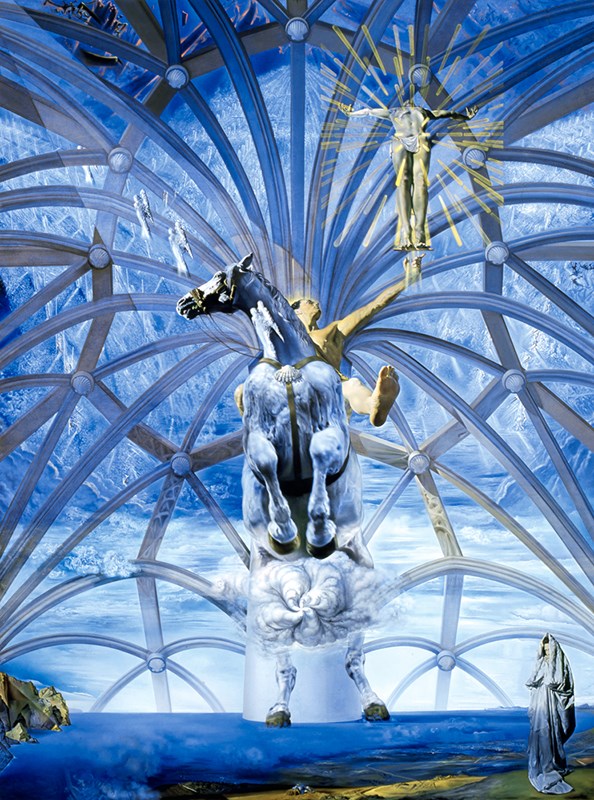Cathy Dobson
Editor’s Note: The Judith and Norman Alix Art Gallery is hosting an exhibition billed as the most important art event in Sarnia’s history, the only Ontario stop of the internationally-acclaimed Masterworks of the Beaverbrook Art Gallery. This is the sixth and final in a series of articles.
Darryn Doull was star struck when he helped unwrap Salvador Dali’s enormous Santiago El Grande, the painting drawing so much attention at the Beaverbrook exhibition.
“I helped install it with seven others on the team,” said Doull, who is assistant curator at Sarnia-Lambton’s public art gallery.
“It is awesome. What I noticed was how some areas are extremely sharp and well defined, and some are blurry. People say it’s a dreamlike quality that Dali created.”
The head of the horse ridden by Saint James the Great (Santiago El Grande in Spanish) is in sharp focus while the hoofs are not.
“It gives you a feeling of frontal motion,” said Doull. “When I saw it in person everything really clicked for me. All my questions about it were answered.”
One expansive room at the Judith & Norman Alix Art Gallery is dominated by Santiago El Grande, which measures 13 feet X 10 feet (3 X 4.1 metres) and occupies an entire wall. There are several other important works in the gallery – including two more Dali’s – but visitors are taken aback by the enormity of Santiago El Grande.
“Of course, it wasn’t long before I tried lying down to look at it,” said Doull.
That may sound strange but it happens often with the giant masterpiece.
“At first I thought it was just a gimmick,” said Doull. “But then I began to appreciate why they say you should lie down.
“For the first time, I could see some defined space behind the horse, some architectural space and depth. It seems like the horse is leaping out from the centre of a column.”
Lord Beaverbrook’s wife, Lady Dunn, donated Santiago El Grande, painted in 1957, to the Beaverbrook Art Gallery two years later. She also contributed paintings Dali did of her and her late husband, Sir James Dunn, who had been a great friend of Beaverbrook’s.
The three Dalis are the only surrealist images among the 75 works in the Sarnia exhibition.
Dali, a colourful figure who lived from 1904 to 1989, produced about 20 paintings considered masterworks. He wasn’t modest in his own assessment of Santiago El Grande.
“It is the greatest painting since Raphael,” he once said. “As a matter of fact, it is very much like Raphael.”
Dali painted himself as a tiny figure lying at the bottom of the huge canvass. Saint James is seen rising from the sea on a white stallion and holding a crucifix. Under the horse, it appears there’s an atomic explosion bursting from the petals of a jasmine flower.
Terry Graff, curator of the Beaverbrook Art Gallery, tells a story in his book on the masterworks that sheds light on the relationship between Dali and Beaverbrook.
According to Graff, it was rumoured Lady Dunn commissioned a Dali painting of Beaverbrook in the 1960s. Beaverbrook agreed to sit for the portrait but only on the condition that five buttons appear on his suit jacket.
Dali refused and the deal was off.
